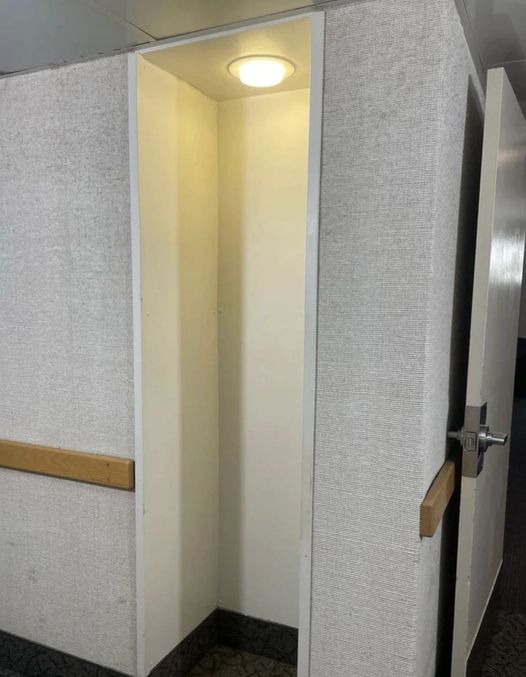Imagine a world where staying connected with your family and friends wasn’t as simple as sending a text or making a quick video call. Long before smartphones became an inseparable part of daily life, college students in the 1960s, ‘70s, and ‘80s depended on a now-forgotten yet iconic fixture: the campus phone booth. These small, often dimly lit enclosures were more than just tools for communication—they were sanctuaries. They offered privacy, an escape from the constant noise of dorm life, and a vital connection to the world beyond campus walls. In an era when communication required intention and effort, phone booths became emotional lifelines for students navigating college life far from home.

Today, if you walk across older college campuses, you might spot remnants of these once-crucial spaces. An empty wall bracket, an overhead light fixture that no longer serves a purpose, or the faint outline of where a phone once hung—all whisper stories of a bygone era. These weren’t just random spaces on campus; they were vital social hubs. Before the rise of mobile technology, these booths were often the only means students had to reach out to loved ones. Every call made inside their modest confines carried weight, whether it was to share good news, ask for advice, or simply hear a familiar voice after a challenging day.
Dorm life in those decades was anything but serene. Shared living spaces buzzed with chatter, laughter, loud music, and the endless hum of activity. In that chaotic environment, the campus phone booth offered something precious: a pocket of calm. These booths, tucked into forgotten corners of dormitory hallways or hidden in out-of-the-way campus spots, became places of refuge. For a brief few minutes, students could step into these modest spaces, shut out the noise, and focus entirely on the person on the other end of the line. These weren’t just phone calls—they were emotional lifelines, tiny moments of connection that felt both personal and profound.
Part of the phone booth’s charm was its simplicity. Most were little more than a phone, a small shelf for coins, and a light hanging overhead. Many didn’t even have doors, offering only partial walls to create the illusion of privacy. Yet, despite their barebones design, those few square feet were enough to create an intimate atmosphere. The soft glow of the light wasn’t just functional; it gave the space a certain warmth, a quiet serenity that felt almost sacred. Students leaned against booth walls, clutching phone receivers tightly as they spoke in hushed tones, savoring every second of their limited call time.
Each call was deliberate, and every moment was meaningful. There was no instant access, no easy dialing of saved numbers. Students had to plan their calls carefully. They needed coins—often scavenged from desks or borrowed from friends—and they needed time. Sometimes, they had to wait in line, listening to snippets of conversations from those ahead of them. When it was finally their turn, they dropped coins into the slot, listened for the telltale click, and dialed a number they had memorized by heart. The sound of the rotary dial turning back into place felt both mechanical and deeply personal. And when the other end finally picked up, every word exchanged felt intentional, every pause meaningful.
By the 1990s, the world began to change. Cell phones started making their way into pockets and backpacks, offering students an unprecedented level of convenience. Suddenly, they could call home from their dorm rooms, campus lawns, or even while walking to class. Communication became instantaneous, effortless, and omnipresent. And with that convenience came the slow disappearance of campus phone booths. What was once a vital part of student life gradually became obsolete. Yet, for those who had relied on them, these booths were more than just outdated technology—they were symbols of an era when connection wasn’t taken for granted.
For those who remember, campus phone booths evoke powerful nostalgia. The metallic chill of the phone receiver, the satisfying sound of coins clinking into the slot, the anticipation of waiting for the call to connect—all of these details are etched into memory. There was an intimacy to those calls that feels almost lost in today’s era of instant messaging and social media updates. Each call was a brief escape from the pressures of academic life, a moment to hear a comforting voice and be reminded that someone cared.
Though most phone booths are long gone, their legacy lingers. They remind us of a time when communication required patience, effort, and intention. Today’s students will never know the experience of saving coins, waiting in line, and clutching a phone receiver like it was a lifeline. But the lesson endures: meaningful connection takes time and focus. In a world dominated by notifications and fleeting messages, the phone booth stands as a symbol of a slower, more intentional way of communicating.
Next time you spot one of these relics—whether it’s an abandoned shell in a dusty corner or a preserved booth on display—take a moment to pause. Imagine the students who once stood there, coins gripped in their hands, voices soft as they spoke to someone far away. These booths may be outdated, but their significance is timeless. They remind us of the beauty of slowing down, focusing on the moment, and savoring connection in its purest form.